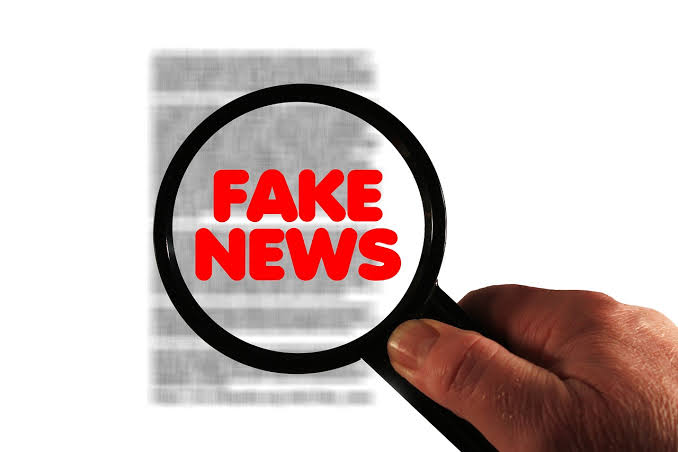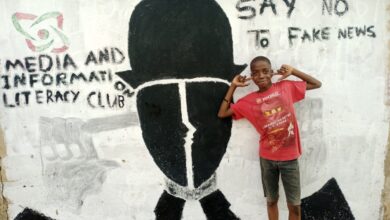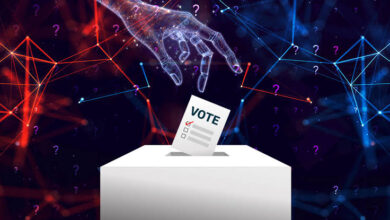
- Knowledge is power
- The Future Of Possible
- Hibs and Ross County fans on final
- Tip of the day: That man again
- Hibs and Ross County fans on final
- Spieth in danger of missing cut
By Mustapha Lawal
Introduction
In recent times, the impact of fake news has reverberated across the African landscape, manifesting in incidents that blur the lines between truth and deception. For example, the Jibril Al Sudani from Sudan story emanated from the rumored death of Former Nigerian President, Muhammadu Buhari in 2018 & widely circulated in Nigeria through various social media channels. Also, in 2018, a series of false reports circulated on social media claiming that the government of Zimbabwe had banned the use of mobile phones. These reports caused widespread panic and confusion and even led to some people destroying their phones.
In another incident, in 2019, a fake news story claiming that the president of Kenya had died was widely shared on social media, leading to a surge in traffic to the president’s official website. These are just a few examples of the many ways in which fake news has hurt Africa.
The spread of fake news is a serious problem that has the potential to undermine democracy and public trust. It is important for people to be aware of the dangers of fake news and to be able to critically assess the information they consume.
A significant percentage of information on high-profile events (the confrontational situation in the Jibril Al Sudani from Sudan story), does not correspond to reality. The root cause of this is the use of such information for governmental propaganda purposes: in this case, the news stories are used not to inform the public, but to impose certain opinions on them, which is generally beneficial to one side or another.
This document will attempt to highlight the main methods that can be used for the identification of lies in mass media.
Fact vs. Opinion
- Facts are statements that can be verified by evidence. They are objective and not open to interpretation.
- Opinions are statements that reflect a person’s beliefs or feelings. They are subjective and cannot be verified by evidence.
Let us begin by agreeing that we’ll attempt to work only with proven facts, and not with statements by any side. For example, if a member of an opposition party in Nigeria makes a statement on the status of a government initiative in Nigeria, while the Nigerian presidency and spokesperson of the office in charge denies the said statement, then we find ourselves in a classic scenario of “word against word”; two interested parties say that which benefits them.
For this reason, our [https://factcheckelections.org/] has so many refutations of verbal statements: they are possible only when someone contests information that is beneficial to them (for example, when a court verdict regarding Kano state governorship election was misinterpreted and reported differently by party loyalists and echoed by popular media platforms). Therefore we shall try to speak of only facts.
Photo-fake
This is a more popular type of fake, but also it is easier to dispel. Using the Internet, it is usually possible to establish the credibility of any photo within a matter of seconds. As it turns out, however, most users are incapable of this; they instantly believe any “screaming” photo.

Photoshopped Photo of Peter Obi Visiting Tinubu Alongside Dangote and Gbajabiamila during the Election Period
There are several ways to ID a photo fake. If you use Google Chrome you simply need to right-click on an image and select the option of searching for the image in Google (using the Google reverse image search).
If you use a different browser (one without the default Google image-search option), you can install a web extension or plug-in; there are many. For example, a very useful one is Who stole my pictures? The benefit of this plug-in is that it can search not only on Google, but also on Yandex, Tineye, or all three at once.

If you do not have Chrome and do not have the option of installing a plug-in, you can do without them. You simply need to have two tabs open in your browser: one tab contains the page with the subject image; and the second tab contains the Google Images page. Go to the first tab, and use your mouse to grab the subject image, then drag it to the second tab, and finally drop it into the search bar of the Google Images page.

This way you can also search for images from your hard drive: simply drag-and-drop the image file into the Google Images search bar.
As a result of this method, you can examine two very important aspects. The first is whether the image is original, or has been subject to photo-editing software. In our example, the search revealed the image has been subjected to software editing.

The second aspect is the image’s date of publishing and its true subject matter.
Video-fake
Verifying video forgery is much more challenging than with images, as there is no simplified search method. However, if you suspect the authenticity of a video or you figure elements around it to be questionable, you can try one of these methods.
First of all, if you are watching a YouTube window plug-in on some site, go to YouTube itself, to gather more information on the video (do this by clicking on the YouTube logo in the bottom right-hand corner). This will allow you to see the video’s title, description, tags, and other information.

Of course, little information is what can be obtained from this method. If there are no obvious signs of a video fake, we recommend that attention be drawn to the following. If there is a recent date in the very title of the video, and that particular video has been uploaded to YouTube multiple times over a short period, then there is a high probability that the video is fake. Select a version of the video with the highest amount of views, and read the comments by other viewers; there is a high probability that some of the viewers have seen the original, and may have even posted a link to it.
In addition to the overall context, pay attention to details such as object names, car license plates, and street signs. These details can be used to determine what is truly taking place. For example, a car’s license plate can be used to track down the owner and get more information. A street sign can be used to determine the location and context of the video.
Another method for finding the source of a video is to verbally describe what you see in the video and then search for the description on YouTube or Google. For example, if you see a video of a cat playing with a ball of yarn, you could search for “cat playing with yarn” on YouTube or Google. This may help you find the original video or at least a video that is similar to the one you are looking for.
Another method: make a screenshot of a more prominent part of the video, and place it in Google Image search, using the method described earlier. There is a possibility that someone used the video in some news, or used such a prominent screenshot as an image somewhere. This way it is possible to uncover the source.
Witness Statements
The validity of witness statements is often difficult or impossible to evaluate, but there are exceptions. When evaluating witness statements, it is important to pay close attention to the context in which they are made. Are the witnesses speaking on a specific subject matter, or are they making general statements that could be interpreted in a variety of ways? It is also important to consider the motivations of the witnesses. Are they speaking out of a sense of civic duty, or are they motivated by personal gain or political bias?
In the case of journalistic claims, it is important to consider whether the witness statements provide any actual confirmation of the claims being made. For example, if a journalist claims that a politician has accepted bribes, it is important to see if any witnesses can corroborate this claim. If there are no witnesses who can corroborate the claim, then it is important to be skeptical of the journalist’s claim.
It is also important to consider whether the witness statements are being used in a way that is consistent with the journalist’s interests. For example, if a journalist is trying to make a particular political point, they may be more likely to use witness statements that support their point of view, even if those statements are not entirely accurate.
When evaluating witness statements, it is important to pay close attention to the context in which they are made, the motivations of the witnesses, and how the witness statements are being used. By doing so, you can better assess the credibility of the witness statements and the validity of the journalistic claims being made.
It is crucial to find the source of the news or the news’ pretext. This is because the source can provide valuable context and information about the veracity of the news. For example, if the news comes from a credible source, such as a major news organization, it is more likely to be accurate. However, if the news comes from an unknown or unreliable source, it is more likely to be false or misleading.
In addition to the source, it is also important to consider the pretext of the news. The pretext is the context in which the news is reported. For example, if the news is reported in a sensationalist manner, it is more likely to be inaccurate. However, if the news is reported more objectively, it is more likely to be accurate.
By considering the source and the pretext of the news, you can better assess the veracity of the news and make an informed decision about whether or not to believe it.
The key to identifying a fake is to think critically about the information you are presented with. Informational warfare is a major element of confrontation, so do not take information at face value without being fully convinced of its validity.





Hi, this is a comment.
To get started with moderating, editing, and deleting comments, please visit the Comments screen in the dashboard.